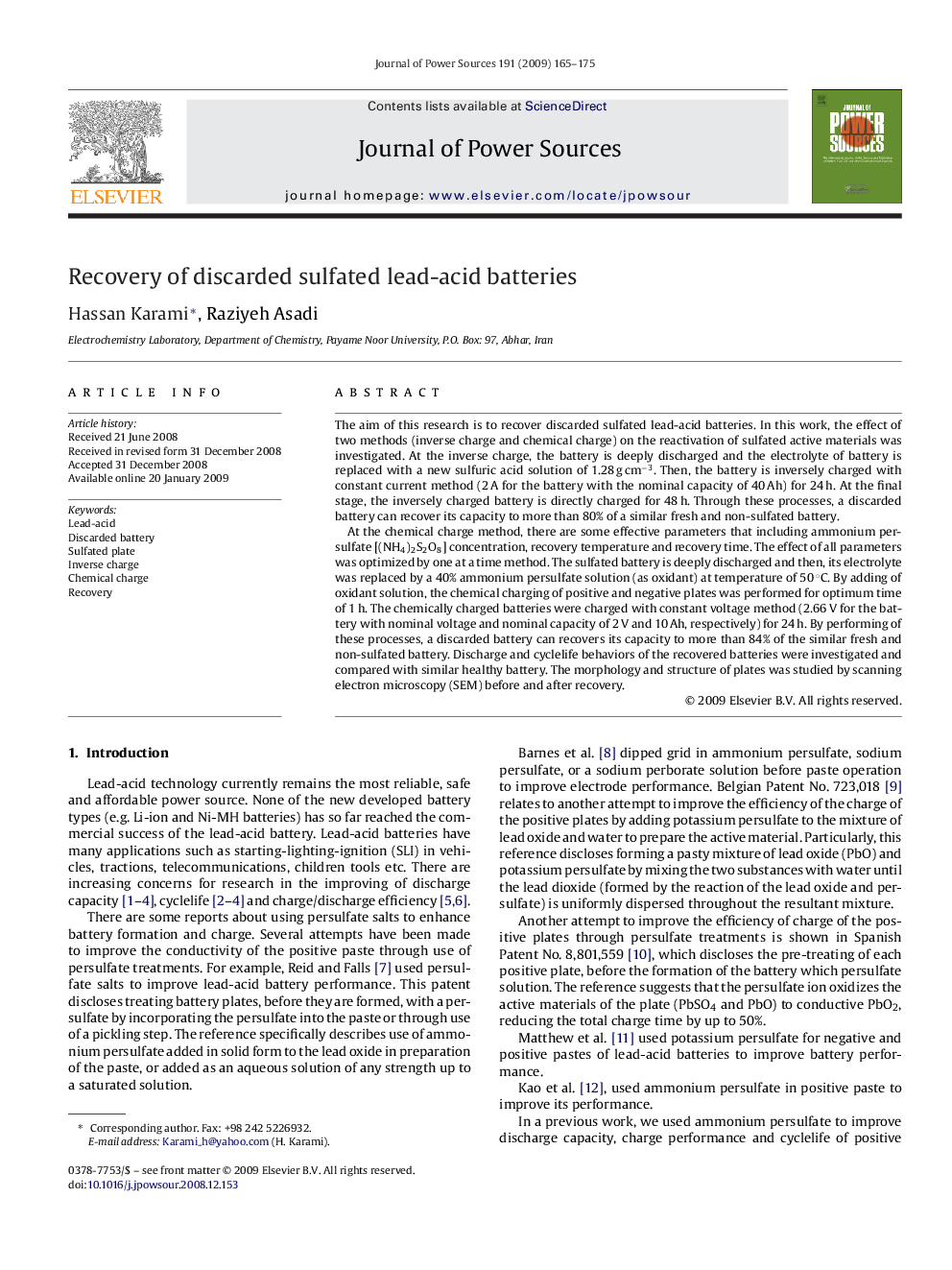| Article ID | Journal | Published Year | Pages | File Type |
|---|---|---|---|---|
| 1290698 | Journal of Power Sources | 2009 | 11 Pages |
The aim of this research is to recover discarded sulfated lead-acid batteries. In this work, the effect of two methods (inverse charge and chemical charge) on the reactivation of sulfated active materials was investigated. At the inverse charge, the battery is deeply discharged and the electrolyte of battery is replaced with a new sulfuric acid solution of 1.28 g cm−3. Then, the battery is inversely charged with constant current method (2 A for the battery with the nominal capacity of 40 Ah) for 24 h. At the final stage, the inversely charged battery is directly charged for 48 h. Through these processes, a discarded battery can recover its capacity to more than 80% of a similar fresh and non-sulfated battery.At the chemical charge method, there are some effective parameters that including ammonium persulfate [(NH4)2S2O8] concentration, recovery temperature and recovery time. The effect of all parameters was optimized by one at a time method. The sulfated battery is deeply discharged and then, its electrolyte was replaced by a 40% ammonium persulfate solution (as oxidant) at temperature of 50 °C. By adding of oxidant solution, the chemical charging of positive and negative plates was performed for optimum time of 1 h. The chemically charged batteries were charged with constant voltage method (2.66 V for the battery with nominal voltage and nominal capacity of 2 V and 10 Ah, respectively) for 24 h. By performing of these processes, a discarded battery can recovers its capacity to more than 84% of the similar fresh and non-sulfated battery. Discharge and cyclelife behaviors of the recovered batteries were investigated and compared with similar healthy battery. The morphology and structure of plates was studied by scanning electron microscopy (SEM) before and after recovery.
